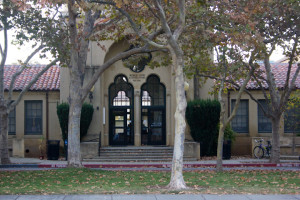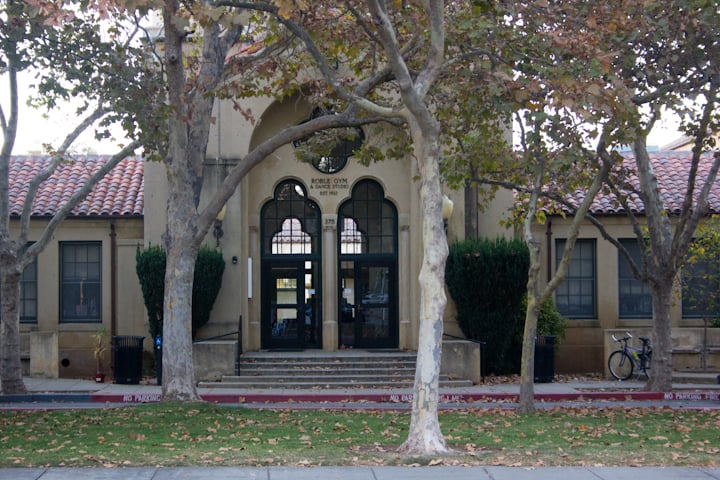Stanford Arts Initiative displaces student arts groups
Student performing arts groups are struggling to find campus rehearsal spaces as a result of new programming by the Stanford Arts Institute, which limits space available for student groups. Dance groups have resorted to rehearsing in dorm lounges, community centers and even parking lots. Meanwhile, individual performers and bands not part of a student organization have even lower priority in booking practice spaces.

In the past, student groups have used the Braun Music Center or the Roble gym complex to rehearse and perform. The Stanford Arts Institute’s productions, including workshops by visiting artists and drama productions, are now held more frequently in these facilities.
Performing arts groups are left with second priority, with preference given to students in the dance division of the Department of Theatre and Performance Studies.
“I try to be fair, to get everyone rehearsal space,” said Tony Kramer, Roble Gym’s facilities coordinator. “[The process] is full of failure.”
Stanford Arts Institute events are prominent on the Roble Dance Studio calendar, reserving several hours nearly every day and taking up many of the dance studios’ weekday afternoon slots, prime time for student group rehearsals.
“Last year, space was a lot easier to reserve,” said Alliance Streetdance co-director Brittany Ueno ’12. “You would usually get a set time and day, but because of [Stanford Arts Initiative], we were not allotted space until the first week of school.”
Because of the lack of availability in the Braun Music Center and Roble Gym, students have had to relocate to unconventional venues.
“We’ve resorted to dancing in parking lots,” Ueno said. “If we need to practice, we are going to practice.”
Ankita Patro ’12, co-director of Basmati Raas, has experienced similar problems.
“It’s hard to get space in Roble this year because the drama department has increased their use of dance space,” Patro said. “We’ve practiced in Meyer Forum. That was kind of a last resort. Sometimes we would show up there, and there would be office hours, [so] we would have to find another place.”
“Student dance groups are looked at differently than people from the dance department,” Ueno said. “I think that’s really sad because dance groups can offer just as much in learning as the dance department.”
Artists and bands that are not a part of an arts organization but perform in their spare time are left in an even more difficult position. They are left to scrounge up whatever remaining space performing arts groups leave behind.
“Our only option is to lug our equipment across campus on our bikes and skateboards to a practice room that we don’t have a key to,” said Ben McKenzie ’15, who plays in a student band. “We have to wait outside until someone who lives there lets us in.”
Scott Kepley, the department of music’s technical services manager, controls practice space in the Braun Music Center, where Ben initially searched for a practice room but was told there was no space left.
“[We have] so many different groups that want to use our spaces that we have to give [music department] students the first crack at spaces,” Kepley said. “Then, we try to open it up to the broader student groups on campus.”
According to Kepley, there are 13 practice classrooms available in Braun available for a $50 per quarter fee, but availability of practice space is “difficult just because [Braun] has so many different groups competing for space.”
Although Kepley suggested “residence halls are probably the first and best place to look,” they are not ideally suited to the loud noise and large groups that accompany the performing arts.
Even Kimball Hall, the performing arts-themed dorm on campus, has no music or group rehearsal spaces, only a recording studio.
“The students use the lounge, but because so many people want to use it we have to limit it to a couple times a quarter,” said Sharon Wei, Kimball’s resident fellow. “We have been suggesting Manzanita Dining because it has a piano and it’s not really used after dinner time.”
Other popular rehearsal spots include the Black Community Center and the Elliott Program Center, both of which have wood floors for dancing.
After hearing about the dearth of rehearsal spaces from several students, ASSU Senator Viraj Bindra ’15 is starting an effort to improve arts spaces on campus.
“Our goal is to reallocate spaces to help [performing arts groups] and help artists who are not necessarily part of an official student organization,” he said. “We want to rearrange the way we look at spaces within dorms and within residences.”
As part of the Stanford Arts Initiative, several building projects are at various stages of construction in the new campus “Arts District,” including the Bing Concert Hall, the Anderson Collection Art Museum and the McMurtry Building for Art and Art History. None of these buildings are expected to host student group rehearsals, through the Bing Concert Hall will be open for select student performances.
For now, students and administrators will continue to struggle to find practice space.
“When I’m scheduling, typing e-mails [for Roble Gym bookings], I can hear people all over campus screaming,” Kramer said.
CORRECTION: In “Performing arts groups struggle to find rehearsal spaces” (Oct. 17), The Daily incorrectly reported that the Elliott Program Center is only open to Governor’s Corner residents. In fact, all students can use the center. Additionally, The Daily misrepresented the level of Stanford Arts Institute (SAI)’s involvement due to clerical errors by the Department of Theater and Performance Studies that led to incorrect bookings remaining on the Roble calendar since last spring. The SAI still funds at least one class using space in the Roble gym complex, though that class may have been able to run without SAI funding. The Daily regrets these errors.
